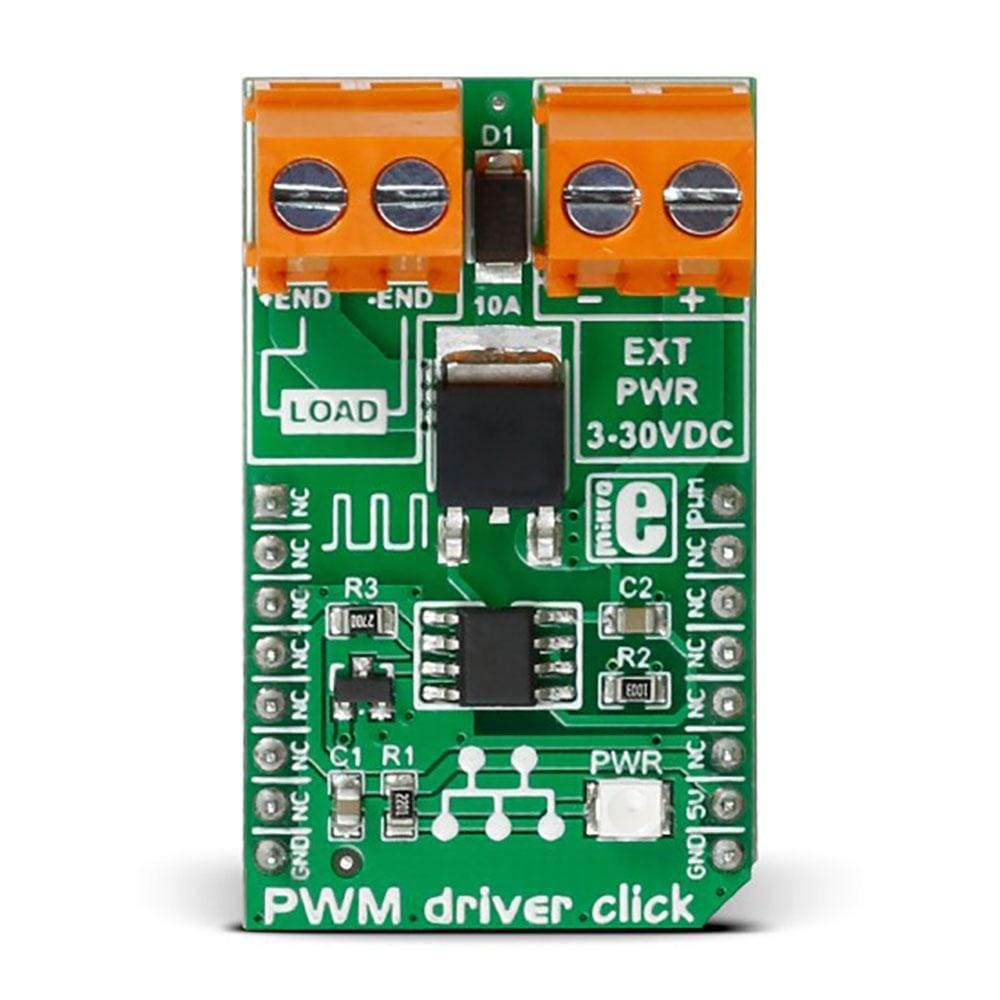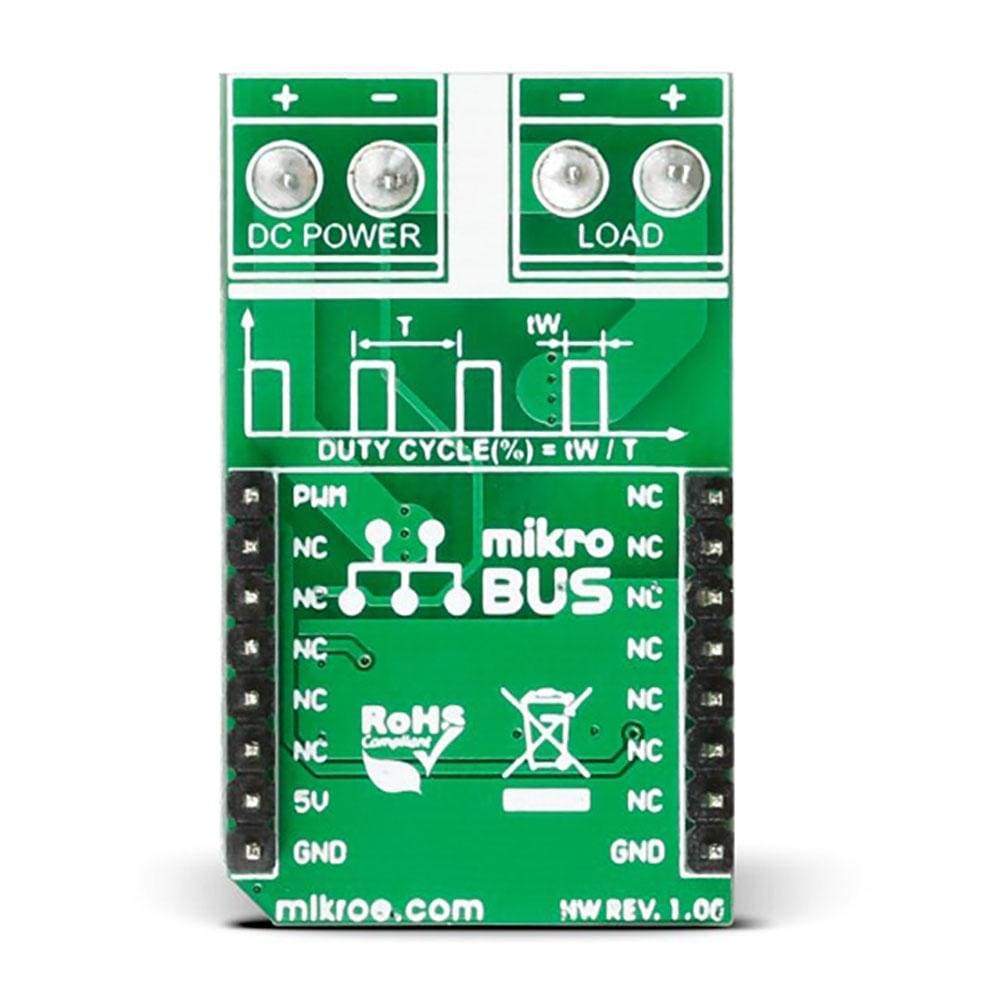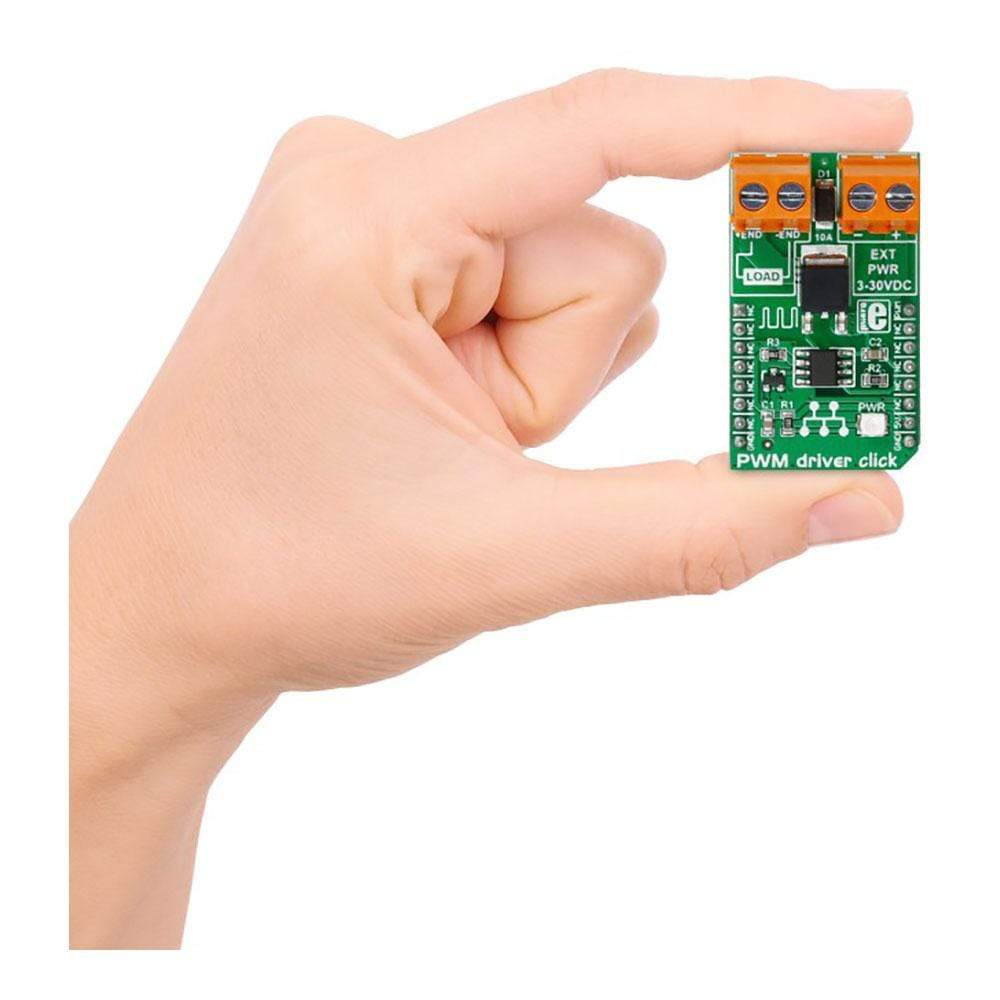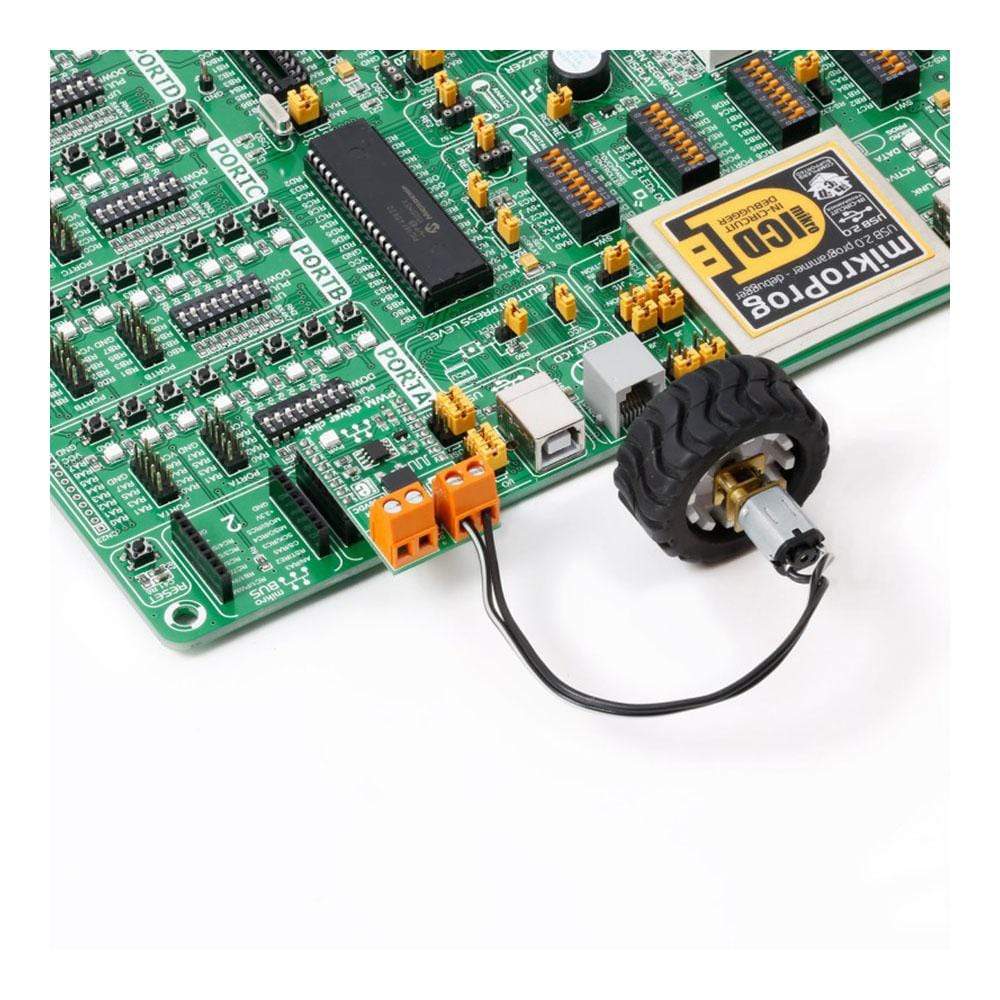



Overview
If you need to control DC motors with loads up to 10A, the PWM Driver Click Board™ is the perfect solution, thanks to the Silicon Lab Si8711CC one-channel isolator. It communicates with the target MCU over the PWM pin and runs on a 5V power supply. It can be used in a wide variety of ways, from controlling light intensity to serving as an ON/OFF switch to control DC load circuits.
Downloads
If you need to control DC motors with loads up to 10A, the PWM Driver Click Board™ is the perfect solution, thanks to the Silicon Lab Si8711CC one-channel isolator. It communicates with the target MCU over PWM pin, and runs on a 5V power supply. It can be used in a wide variety of ways, from controlling light intensity to serving as an ON/OFF switch to control DC load circuits.
MOSFET TRANSISTOR
The PWM Driver Click Board™ contains a P-channel DMP3010LK3 MOSFET transistor. When the PWM Driver Click Board™ is used for PWM control it is not recommended to use it with loads of wattage over 50W because the MOSFET chip can get overheated; however, this does not apply when the click is used as an ON/OFF switch.
ONBOARD SCREW TERMINALS
There are two pairs of screw terminals on the PWM Driver Click Board™ — one for the external power supply and one for the DC load.
APPLICATION
DC motor speed control, electronic ON/OFF switch for controlling DC load circuits, light intensity control, etc.
SPECIFICATIONS
| Type | Brushed |
| Applications | The PWM Driver Click Board™ is suitable for DC motor speed control, as an electronic ON/OFF switch for controlling DC load circuits, light intensity control, etc. |
| On-board modules | Silicon Lab Si8711CC one-channel isolator, P-channel DMP3010LK3 MOSFET transistor |
| Key Features | Two pairs of screw terminals |
| Interface | PWM |
| Compatibility | mikroBUS |
| Click board size | M (42.9 x 25.4 mm) |
| Input Voltage | 5V |
| General Information | |
|---|---|
Part Number (SKU) |
MIKROE-2272
|
Manufacturer |
|
| Physical and Mechanical | |
Weight |
0.03 kg
|
| Other | |
Country of Origin |
|
HS Code Customs Tariff code
|
|
EAN |
8606015079431
|
Warranty |
|
Frequently Asked Questions
Have a Question?
Be the first to ask a question about this.




